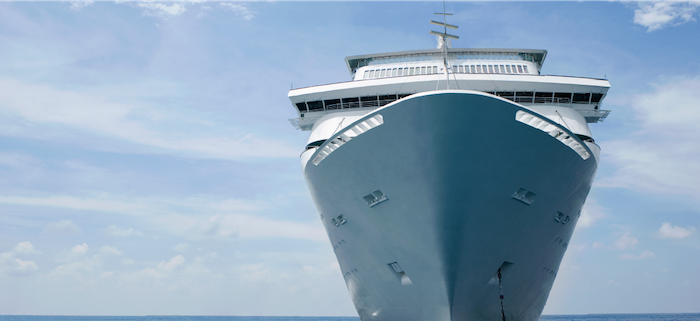Key points:
- 10% of Britons—approximately 5 million adults—say they’re likely to take a cruise in the next 12 months.
- Older generations lead interest: Nearly half of cruise intenders are Baby Boomers.
- Traditional media remains effective, with TV adverts (46%) being the most attention-grabbing channel.
- Social network ads (37%) outperform other online formats like website (26%) and video ads (26%).
- P&O Cruises leads brand consideration at 39%, followed by Royal Caribbean (30%) and Celebrity Cruises (26%).
Next year, fully 10% of Britons—equivalent to about five million adults—say they’re likely to embark on a cruise in the next 12 months. Who exactly is preparing to set sail, how can marketers reach them, and which cruise lines are they considering?
A silver wave: Cruise intenders skew older in Britain
Unlike in the United States, where younger generations dominate interest in cruising, British cruise intenders trend older. Nearly half (46%) of those planning to take a cruise in the next 12 months are Baby Boomers, who make up just 25% of the general population. Gen X makes up 23% of cruise considerers, while Millennials and Gen Z together comprise just 25.
Next year’s cruisers are also likely to have a little more money than the general population. This group is more likely to have a higher (24% vs. 21%) or middle income (40% vs. 34%) than the general population.
Cruise intenders in Great Britain are more likely to be parents of adult children—53% say they have at least one child over 18, compared to 37% of the general population. Gender distribution is nearly even (50% male, 50% female), and this audience is more rural and suburban than urban.
Likely cruisers are also more likely to belong to a religion, with 36% belonging to the Church of England compared to only 24% of the general population. Nearly half of all Britons (48%) say they belong to no religion in particular; among cruisers, it’s only 36%.
Where advertisers can find them
British cruise intenders respond strongly to traditional media. TV remains the top channel for catching their attention, cited by 46%—notably higher than the general population (40%). In-store promotions (29%) and direct mail (19%) also resonate more with this group than with the general public.
When it comes to online advertising, social networks remain the most effective online channel, catching the attention of 37% of cruise intenders—higher than websites (26%), online videos (26%), and apps (15%).
Which social networks are best for reaching the cruise audience? Facebook (72%) and WhatsApp (72%) dominate usage, followed by YouTube (48%) and Instagram (39%).
Top cruise brands under consideration
British-based P&O Cruises is the most widely considered line among British cruisers. Royal Caribbean (30%) is next, followed by Celebrity Cruises (26%), and Princess Cruises (26%). Cunard Line (20%) and Marella Cruises (18%) also earn significant interest.
Smaller brands like MSC Cruises (17%), Virgin Voyages (16%), TUI River Cruises (14%), and Saga (13%) round out the top 10. The data highlights a market with clear favorites but still a healthy diversity of choice, suggesting opportunities for differentiated positioning and niche offerings.
Cruising forward
As cruise lines and travel marketers chart their strategies, understanding the distinct profile of the British cruise audience is crucial. With a consumer base that is older, more traditional in media habits, and loyal to legacy brands, campaigns that emphasize quality, experience, and trust are likely to resonate most.
Methodology: Data is from YouGov Profiles, which is based on continuously collected data and rolling surveys. Profiles data for Great Britain is nationally representative of the online population and weighted by age, gender, education, region, and social grade. Learn more about YouGov Profiles.
